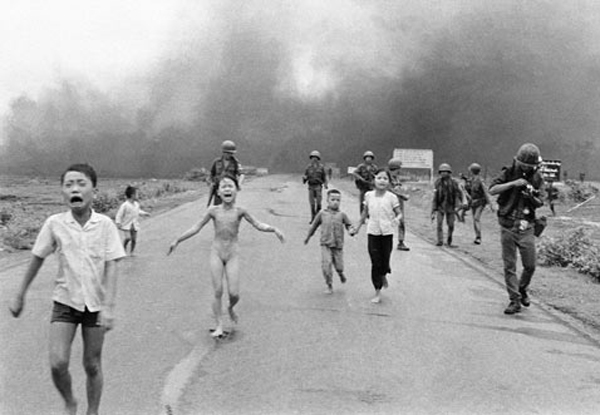
A photo that needs no comments that reported in the opening. An icon symbol of the war in Vietnam, taken by Associated Press photographer Nick Ut, June 8, 1972 at the village of Trang Bang, South Vietnam. Phan Thi Kim Phuc, the girl who runs, senz'abiti , crying, away from the village bombed with napalm, it has become the symbol of the atrocities and war (of all wars). Shooting, now entered the history of photography and whose iconographic value is officially recognized, is back in the spotlight in recent hours following the decision of Facebook managers to censor the post that contained it, published by Norwegian writer Tom Egeland and entitled 'Seven photographers who changed the history of the war'.
Facebook has suspended the account of Egeland sparking media reactions, from Aftenposten, the leading Norwegian newspaper, which reported the story by posting on their Facebook account the same photo. This has led to a second intervention by the staff of the social network who asked to Aftenposten to remove the photo or to conceal part of the content. The motivation was the following: pictures that show people completely naked and make visible the genitals or totally naked women according to our rules must be totally removed. Censorship unconditionally extended to Erma Solberg, Norway's First Minister that, in protest, he published the same photo on Facebook, which is also removed.
Ground that, in an absolute sense, is acceptable, but that, compared to the case, as evidenced by Espen Egil Hansen, Director of Aftenposten, highlight the problem of the inability to distinguish between Facebook pornography, pedophile and a famous war photos, and an unwillingness to give free space giudizo. Before the Norwegian Minister in the uproar, accusing the managers of the popular social network to cancel our common history.
accusations which was followed by the response of a spokesman for the social network released to The Guardian:
While we recognize that this photo is iconic, it's hard to create a distinction allowing a picture of a naked child in one case and not in others. We try to find the right balance by allowing people the freedom to express themselves and maintaining a safe and respectful for our community. Our solutions are not always perfect, but we will continue to try to improve our policies and the way they are applied.
The spokesman of the response suggests that they are studying the rules and instruments to prevent the automatic and unconditional censorship of content such as the one shown. Operation that, if carried out by bots (short) smart, it could result in a form of censorship poorly digestible. Despite Facebook's cooperative attitude, by the time the controversy about choosing to censor the photo does not subside.
Comments
Post a Comment